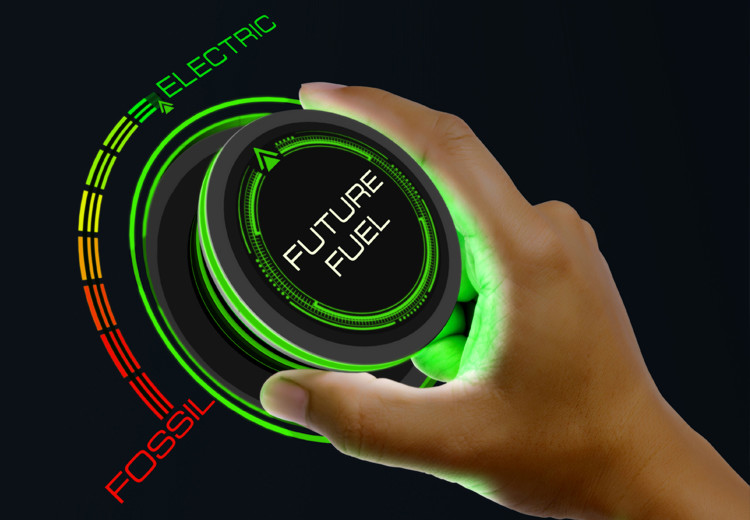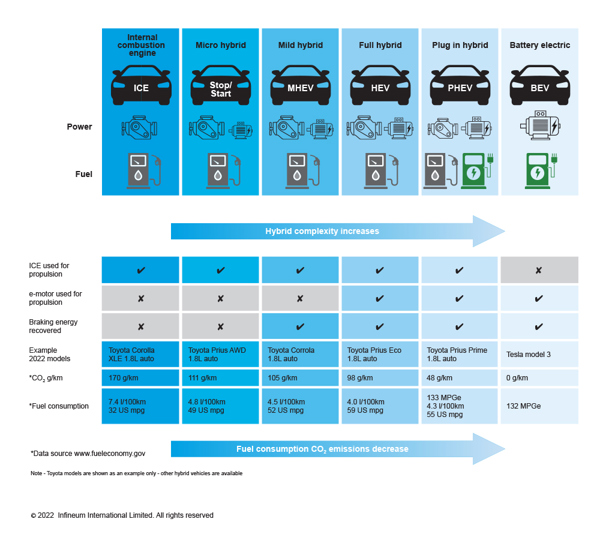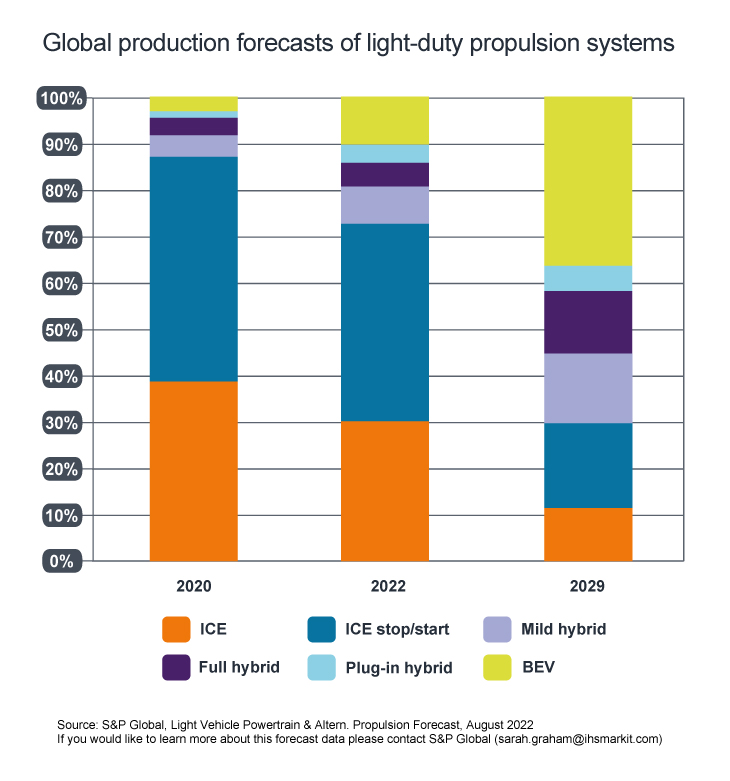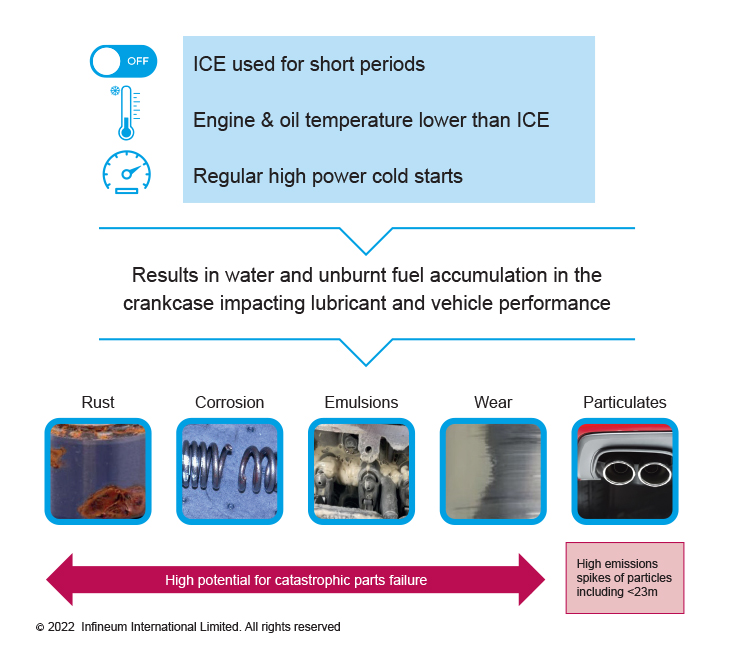Passenger cars
Severe hybrid engine oil testing
20 May 2025
30 August 2022
How to develop a lubricant portfolio for today’s changing powertrain landscape towards a more sustainable world

As the automotive industry works to meet net-zero emissions commitments, the pace of powertrain electrification is accelerating. Although a full electric future may still be some way off in the future, hybrid architectures are already helping OEMs take a big step in the right direction on their emissions reduction journey. Hybrids might be well-established technologies but, as OEMs work to squeeze every drop of efficiency out of these systems, their lubrication requirements are changing. Insight looks at the challenges that are arising and the opportunities these present for lubricant marketers to create hybrid-specific engine oils.
Before looking at the extent to which electrification is penetrating the passenger car vehicle market, it is important to understand what the terms widely used in the industry by various OEMs mean, since not all vehicles carrying a hybrid logo have the same propulsion systems driving the wheels. The first graphic gives a high level overview of the differences between hybrid architectures from start/stop, mild hybrids (MHV) and full hybrids (HEV) to plug-in hybrids (PHEV) and full battery electric (BEV).

Emissions legislation and OEM commitments to net-zero are accelerating the pace of light-duty powertrain electrification. But, while we wait for the infrastructure to catch up and for consumers to fully embrace battery electric vehicles, we can expect a range of technologies to be in the market for the next 10 years and beyond. Hybrids - or electrified internal combustion engines (e-ICE) - are well-established in the market and have demonstrated their ability to provide significant reductions to overall emissions. Many OEMs can be expected to include full- and plug-in hybrids in their short- to mid-term emissions reduction strategies as they transition away from the internal combustion engine.

The chart shows a reasonably fast growth in hybrid production from 2020-2022 to meet orders from early adopters. By 2029 BEV, along with mild, full and plug in hybrids, are expected to account for almost 70% of worldwide light-duty vehicle production. In this same timeframe, hybrids containing a combustion engine (excluding micro hybrids) will account for around 34% of vehicles produced, while those hybrids that can employ the e-motor for propulsion will account for almost 20%. Longer-term, vehicle electrification predictions are hard to make owing to the level of uncertainty of green deals and other government and industry initiatives.
Despite being identified as a bridging solution, as average vehicle age trends older, hybrid technologies have the potential to remain a part of the global car fleet for several years to come.
Currently, OEMs tend to recommend conventional passenger car motor oils (PCMO) for their hybrid models and have not introduced hybrid lubricant specifications. However, many OEMs do make specific recommendations for their vehicles on viscosity grades or oil drain intervals (ODI). But, as e-ICE technology advances, and the use of stop/start systems diminishes in favour of more complex systems, the environment is becoming very challenging for conventional lubricants. Each of the more advanced e-ICE configurations are different in their pattern of operating cycles and will challenge the lubricant in very different ways compared to a standalone ICE.
In HEV and PHEV architectures, where the e-motor can drive the wheels, the ICE can stay off completely or be used to supplement the power of the e-motor under certain driving conditions. This means the engine operates for only short periods and the oil temperature is much lower than in a conventional ICE-only vehicle or more basic hybrid architectures.
The persistent low temperatures in these hybrids are raising concerns regarding the ability of conventional PCMO to sufficiently protect the e-ICE.
Specifically, issues with the accumulation of water and unburnt fuel in the crankcase have been noted, which can result in lubricant emulsions, rust, corrosion and increased wear – all of which have the potential to cause catastrophic parts failure.
In addition, the engine performs a number of high-power cold starts, which create much more engine stress due to the rapid application of a high engine load. The concern here is the occurrence of particulate spikes, especially the concentration of very small <23nm particles. Maintaining the effectiveness of advanced aftertreatment systems over the entire vehicle lifetime will become increasingly important to ensure emissions compliance.
Impact of plug-in hybrid drive cycle

Infineum research indicates that the more complex e-ICE configurations benefit from hybrid-specific engine oils that have been tuned to meet the challenges presented by the different operating conditions encountered.
Increasingly complex hybrids, with very specific lubrication requirements, will become a bigger part of the vehicle market in the coming years enroute to full electrification. This trend is expected to drive the demand for a next generation of targeted lubricant formulations.
Today’s hybrids rely on specifications developed for ICE-only duty cycles.
As the market evolves, the impacts of new fuel types, the introduction of lower viscosity grades and the need to protect advanced aftertreatment systems may drive the need for new tests and revised limits in current ICE specifications.
Whether e-ICE specifications will emerge or if e-ICE dedicated tests will be progressively incorporated into existing OEM and industry specifications remains to be seen – but such activity would further support the growth of hybrid-specific oils.
Infineum has been working closely with OEMs, oil marketer customers and other industry partners to gain a comprehensive understanding of these hybrid challenges. Our work has shown that advanced lubricant solutions with performance tuned to the hybrid drive cycle can deliver specific benefits in hybrid applications. By combining our technical knowledge and advanced componentry Infineum has developed lubricant solutions that OEMs, oil marketers and consumers can trust to protect and enhance the performance of e-ICE technologies – now and into the future.
Sign up to receive monthly updates via email